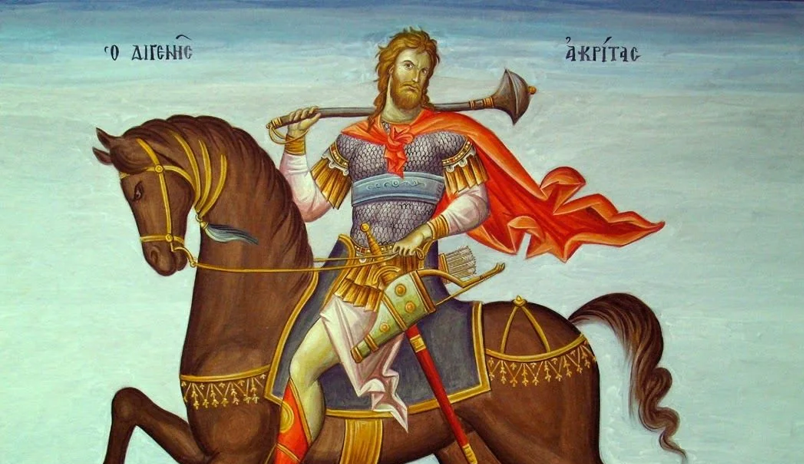
Digenes Akritas (Διγενής Ακρίτας) is one of the only surviving epic poems from the Byzantine/Eastern Roman Empire. It tells the story of the titular character, Basileios, dubbed Digenes Akritas, meaning “two-blood border lord.”
The epic poem is part of the tradition of Acritic songs, popular in the medieval Greek world from about the ninth century onwards. These epic poems celebrated the exploits of Akritai, the frontiersman who defended the borders of the Byzantine Empire.
Although the protagonist of the story is fictional and his heroic feats are far beyond reality, the story does reflect a romanticized version of historical events, namely the constant warring between the Byzantines and Arabs in the mountainous borderlands.
Discovery of the manuscripts
After the collapse of the Byzantine Empire in the fifteenth century, the Digenes Akritas manuscripts were lost and the epic poem faded into obscurity. According to historian John Mavrogordato, the manuscripts began to resurface in the nineteenth century.
The first manuscript was discovered by Savvas Ioannides, who was a Greek schoolmaster in Trebizond, a city that was at that time a part of the Ottoman Empire. Ioannides received the manuscript in 1868 from a Greek Orthodox monk from the monastery of Sumela on the Pontic Mountains.
Other manuscripts were also discovered in the late nineteenth century. This is fortunate because the first manuscript was incomplete and later went missing. One such manuscript was discovered in 1878 on the Greek island of Andros in the Cyclades. It remains in the National Library of Athens.
The oldest manuscript discovered thus far was found in a Greek monastery in Grottaferrata, Italy in 1879. This manuscript is thought to date back to the fourteenth century. This is significant because the Byzantine Empire still existed when it was written, whereas the others are later copies, most likely copied by Orthodox monks from older texts.
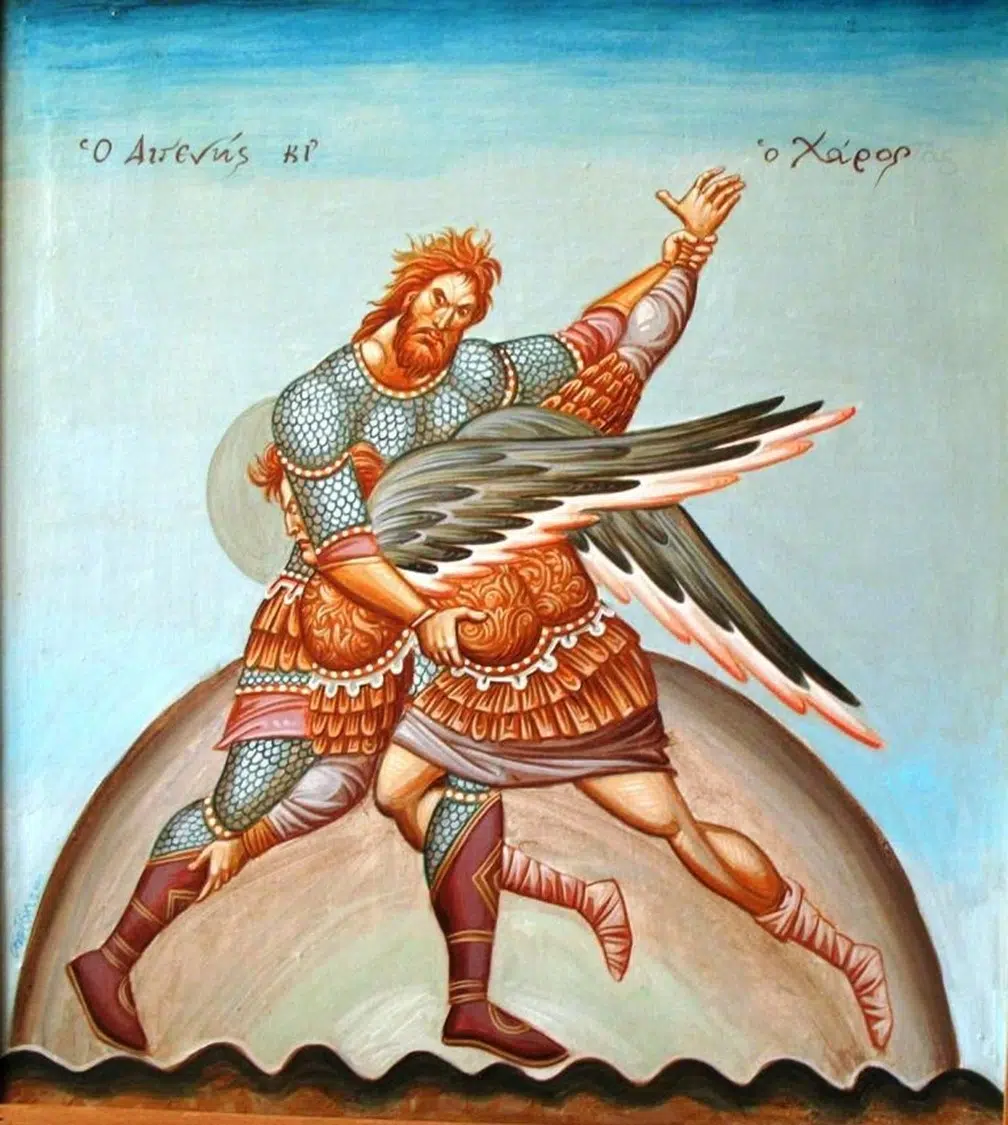
Historical context
The tradition of Acritic songs to which Digenes Akritas belongs flourished in the ninth and tenth centuries. The genre of epic poetry arose in the Byzantine borderlands of Anatolia, where fighting was fiercest between the Byzantines and Arabs. They were delivered orally before being committed to paper.
The protagonists of Acritic songs were usually the Akritiai. These were men who lived in the rugged borderlands of the empire and guarded its approaches. They were a mixture of professionals, militiamen, and irregular soldiers.
The Akritai appears to have been a multi-ethnic force. Byzantine soldiers guarding the border would have drawn from the ethnic Greeks, Armenians as well as other groups who had settled in Anatolia.
Foreign mercenaries were also common in Byzantine armies and often stationed in the borderlands. The ethnic composition of the army changed over time.
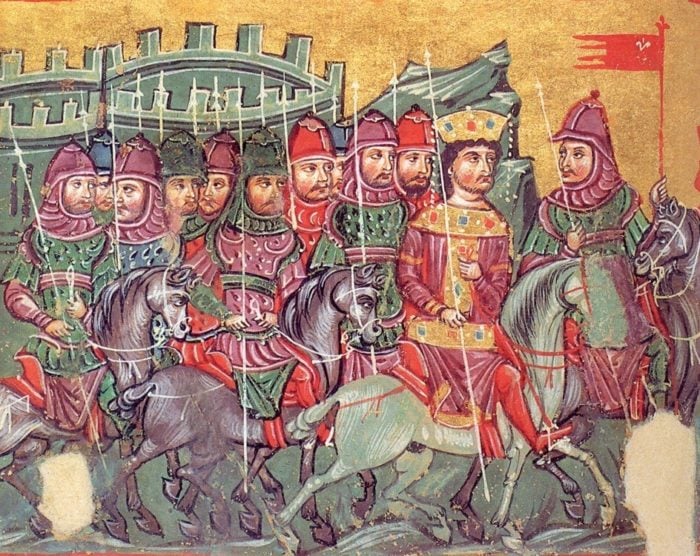
The Byzantines and Arabs clash at the borderlands
The greatest threat posed to the Byzantine border regions during the setting of Digenes Akritas was the Arab Muslims. The Byzantine Empire had been dealt major losses in the seventh century by the invasions of Muslim Arab dynasties.
After the Byzantines had lost vast swathes of territory, a turning point came between 717 and 718 during the Second Arab Siege of Constantinople by the Muslim Arabs of the Umayyad Caliphate. The Byzantines successfully defended their capital and repulsed the invaders.
The Arabs remained a potent threat to the Byzantine Empire between the seventh and eleventh centuries, but fighting was mostly confined to the border regions after the siege of Constantinople had been repulsed.
Raids, kidnappings, and skirmishes took place frequently across both sides of the border. Acritic songs such as Digenes Akritas told stories that arose from these events. The Akritai were portrayed as the heroic defenders of the often small and isolated Byzantine communities at the edge of the empire.
Not all interactions between the Byzantines and Arabs depicted in the Acritic tradition were negative. Basileios Digenes Akritas was the son of an ex Muslim man who converted to Christianity and married his Greek Christian mother.
depiction of a battle between the Byzantines and the Arabs. Credit: Public DomainThe story of Digenes Akritas
The first part of the poem concerns the protagonist’s parents. The father of Digenes Akritas is an Arab emir who invades Cappadocia and abducts the daughter of a Byzantine general. However, the emir reconciles with the daughter and converts to Christianity. The pair settle in the Byzantine Empire and have a son, Basileios Digenes Akritas.
The remainder of the poem is centered on the protagonist himself. In many ways, his superhuman feats are comparable to the heroes of ancient Greek mythology like Heracles. For instance, during his youth, the hero kills two bears while on a hunting trip with his father completely unarmed.
Digenis Akritas also faces a lion and triumphs over it with his bare hands. In this, there is another parallel with Heracles, who slays the Nemean Lion, but he is also called a “second Sampson” in the poem. In this way, the protagonist embodies the qualities of both the heroes of Greek mythology and the Bible. This is emblematic of Byzantine culture itself, which was a blend of the Classical Greek and Roman cultures with Orthodox Christianity.
There are more such parallels. Like Saint George (Agios Georgios)—himself a Greek Cappadocian in the Roman army—Digenes Akritas slays a dragon.
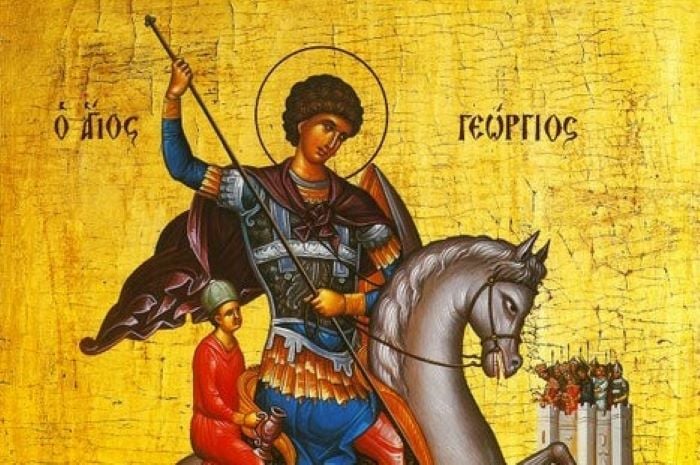
The protagonist of the poem also faces less fantastical human enemies. In one instance, he defeats the three leaders of a bandit party in single combat.
Despite the tendency of most Acritic songs to glorify the deeds of the Akritai against the Arabs, in one version of the poem only one of the enemies slain by Digenes Akritas is given an Arab name.
However, in another version of the epic poem, Digenis Akritas defeats an entire Arab army of 4,000 men entirely alone. Due to the folkloric nature of the story, the versions of events varied between different places and were changed and adapted by storytellers over time.
The poem also contains elements of romance. Digenes Akritas sins by sleeping with the Amazon warrior Maximo out of wedlock. However, he does not marry her due to a prophecy that foretells that he will only live for sixteen years if he does so.
Instead, he abducts and marries Strategovna, the daughter of a Byzantine general. He does this because the same prophecy says that he will live to the older age of sixty-six by doing so.
After a lifetime of adventuring, Digenes Akritas builds a luxurious estate by the Euphrates River, where he settles down and spends his final days. In a later tradition, it is told that he faces death, personified by either Charon or Thanatos, in a final battle. It is the only battle in the entire poem that he loses.
In one version of the epic poem, the hero’s final words are “if only the Earth had steps and the sky handles: I would stand on the steps, I would grab the handles, climb up to Heaven, curl up and sit there and shake the Heavens down.”
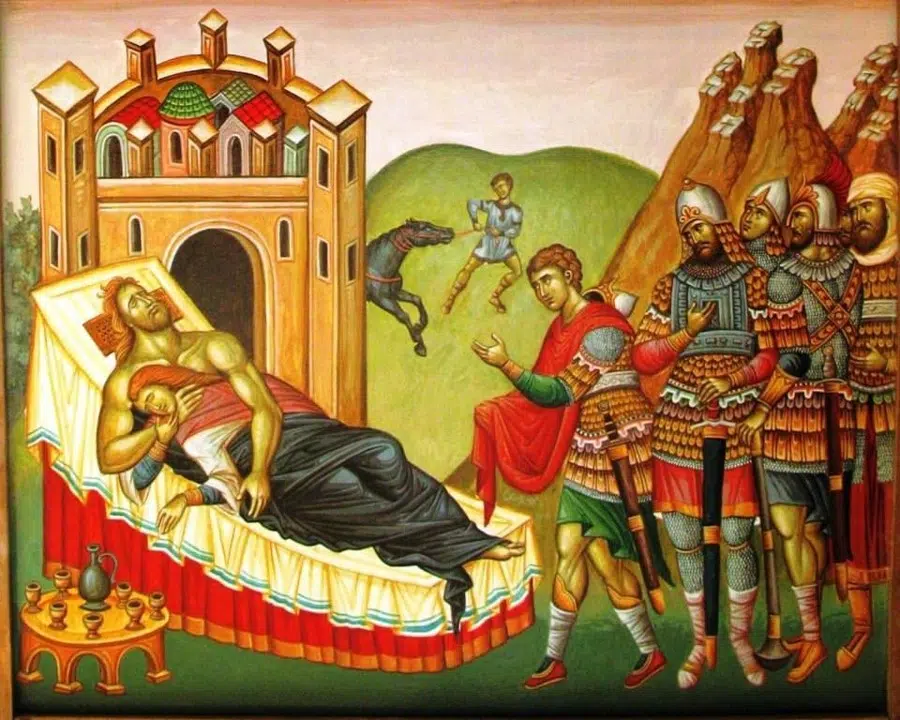
See all the latest news from Greece and the world at Greekreporter.com. Contact our newsroom to report an update or send your story, photos and videos. Follow GR on Google News and subscribe here to our daily email!




